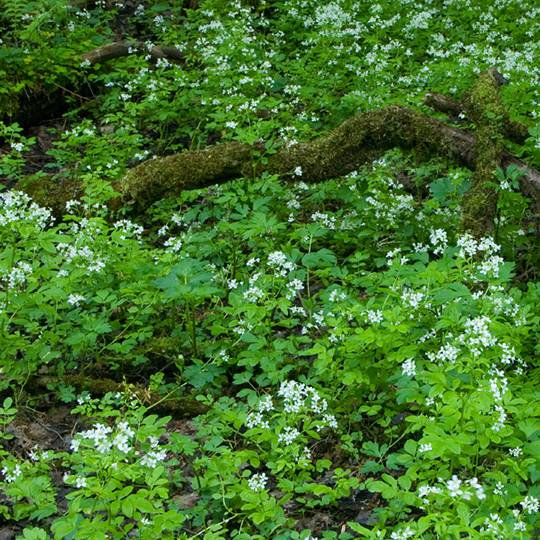
You may have seen the common broadleaf weed known as bittercress (cardamine hirsuta). Related to the mustard plant, this weed is also an edible bitter herb that grows a small white flower some people may find attractive. Other common names for this plant include lamb’s cress, flick weed, and shot weed. Other related weeds include flixweed, mustard, tumble mustard, pepperweed, and shepherd’s purse.
Bittercress Signs and Symptoms
Think you could have bittercress in your lawn? Does the plant in question have the following qualities:
- small, white-tipped flowers?
- short in height, less than a foot tall?
- hairless stem?
If you answered yes to all of the above, then you’re likely to have bittercress growing in your yard and it has already started seeding. The seeds of this weed have the capacity to project two to three feet away from the plant, resulting in rapid growth across your lawn. Also, just one plant can have several generations of seeds a year—even in winter—but these weeds do best in moist conditions in the summer months.
Bittercress Prevention
Preventing bittercress from inhabiting your lawn is easier than removing it once it has taken over. By keeping your grass healthy and thick—which means it’s not mowed too short or watered too much—there’s less of a chance that bittercress will grow. Aeration, seeding, and fertilizing your lawn will also make it stronger, preventing bittercress from attacking weaker blades.
There are also weed control options if your lawn is already being overrun with bittercress. Contact Cardinal Lawns to learn more about what lawn care services will best serve your needs and bring back the natural beauty of your yard.
Need Help with Bittercress?
Call Cardinal Lawns today at 614-808-4446 and let's talk about how we can help treat for Bittercress and other common Ohio lawn weeds.
Get a Free Quote